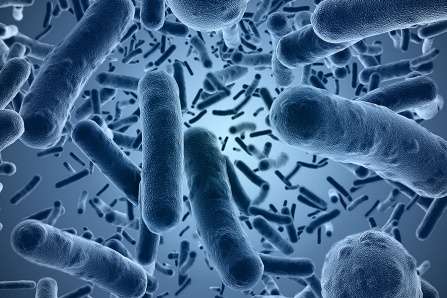Near instantaneous evolution discovered in bacteria

How fast does evolution occur? In certain bacteria, it can occur almost instantaneously, a University at Buffalo molecular biologist has discovered.
Mark R. O'Brian, PhD, chair and professor of the Department of Biochemistry in the Jacobs School of Medicine and Biomedical Sciences at UB, made the surprising discovery when studying how bacteria finds and draws iron into itself. The National Institutes of Health has awarded him a $1.28 million, four-year grant to delve into the mechanisms of bacteria mutating to accept iron, and how the organism expels excess iron.
The discovery was made almost by accident, O'Brian said. The bacteria Bradyrhizobium japonicum was placed in a medium along with a synthetic compound to extract all the iron. O'Brian expected the bacteria to lie dormant having been deprived of the iron needed to multiply. But to his surprise, the bacteria started multiplying.
"We had the DNA of the bacteria sequenced on campus, and we discovered they had mutated and were using the new compound to take iron in to grow," he said. "It suggests that a single mutation can do that. So we tried it again with a natural iron-binding compound, and it did it again."
The speed of the genetic mutations—17 days—was astounding.
"We usually think of evolution taking place over a long period of time, but we're seeing evolution—at least as the ability to use an iron source that it couldn't before—occurring as a single mutation in the cell that we never would have predicted," he said.
"The machinery to take up iron is pretty complicated, so we would have thought many mutations would have been required for it to be taken up," he said.
The evolution of the bacteria does not mean it is developing into some other type of creature. Evolution can also change existing species "to allow them to survive," O'Brian said.
Bacteria, the most abundant life form on the planet, have been around for 3 billion years, evolving and adapting. So how big is the discovery of near instantaneous evolution?
"It will depend on how broadly applicable it is," O'Brian said. "Can we characterize the mechanisms, and look around and see if they are in other systems? How does this affect bacterial communities? How important is it for human health?"
O'Brian said other researchers may take up work on how the new knowledge could impact human health.
The mutation may not be related to how bacteria become resistant to antibiotics. The mutation that O'Brian observed resulted in a "gain of function," a much more complicated event than the adaptation to block an antibiotic, he said.
Organisms can adapt by switching genes on and off. Part of O'Brian's grant is to study how bacteria expel excess iron by turning on different genes.
The work now is "strictly scientific," but uses could be in the offing.
"There is the understanding of a mechanism that may help to better understand how you can approach an infectious disease, or approach remediation of the environment using bacteria," O'Brian said.
Provided by University at Buffalo

















